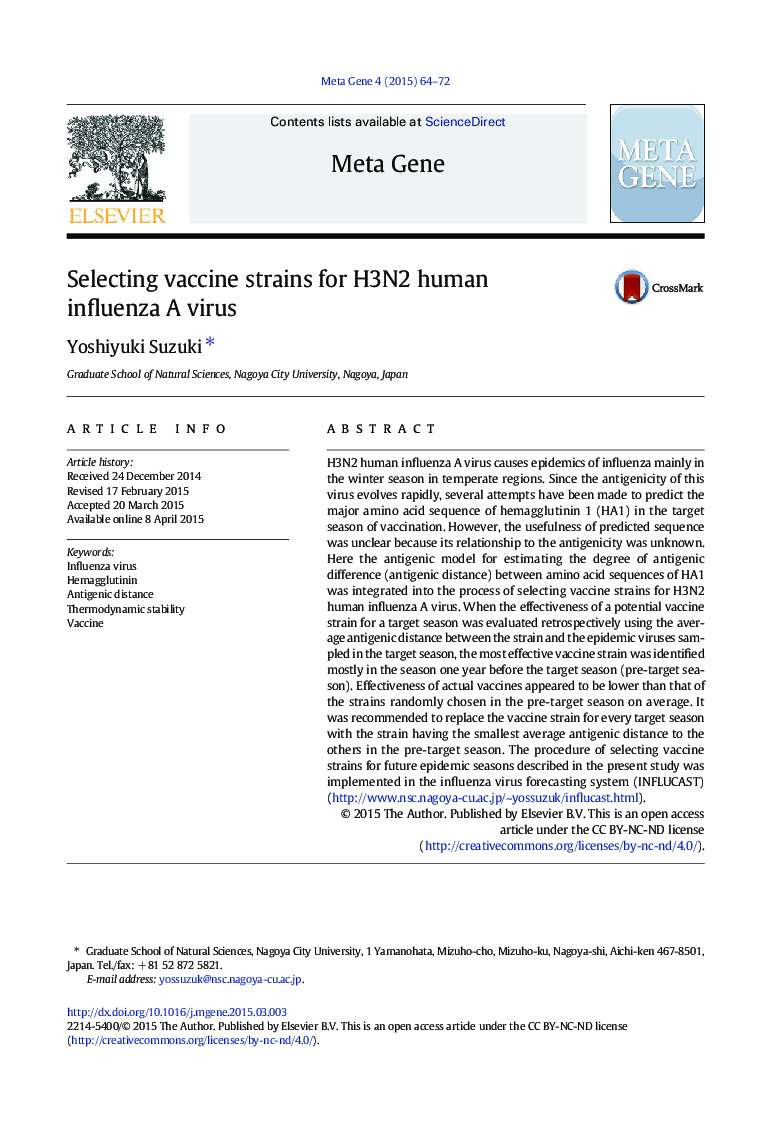| Article ID | Journal | Published Year | Pages | File Type |
|---|---|---|---|---|
| 2058411 | Meta Gene | 2015 | 9 Pages |
H3N2 human influenza A virus causes epidemics of influenza mainly in the winter season in temperate regions. Since the antigenicity of this virus evolves rapidly, several attempts have been made to predict the major amino acid sequence of hemagglutinin 1 (HA1) in the target season of vaccination. However, the usefulness of predicted sequence was unclear because its relationship to the antigenicity was unknown. Here the antigenic model for estimating the degree of antigenic difference (antigenic distance) between amino acid sequences of HA1 was integrated into the process of selecting vaccine strains for H3N2 human influenza A virus. When the effectiveness of a potential vaccine strain for a target season was evaluated retrospectively using the average antigenic distance between the strain and the epidemic viruses sampled in the target season, the most effective vaccine strain was identified mostly in the season one year before the target season (pre-target season). Effectiveness of actual vaccines appeared to be lower than that of the strains randomly chosen in the pre-target season on average. It was recommended to replace the vaccine strain for every target season with the strain having the smallest average antigenic distance to the others in the pre-target season. The procedure of selecting vaccine strains for future epidemic seasons described in the present study was implemented in the influenza virus forecasting system (INFLUCAST) (http://www.nsc.nagoya-cu.ac.jp/~yossuzuk/influcast.html).
